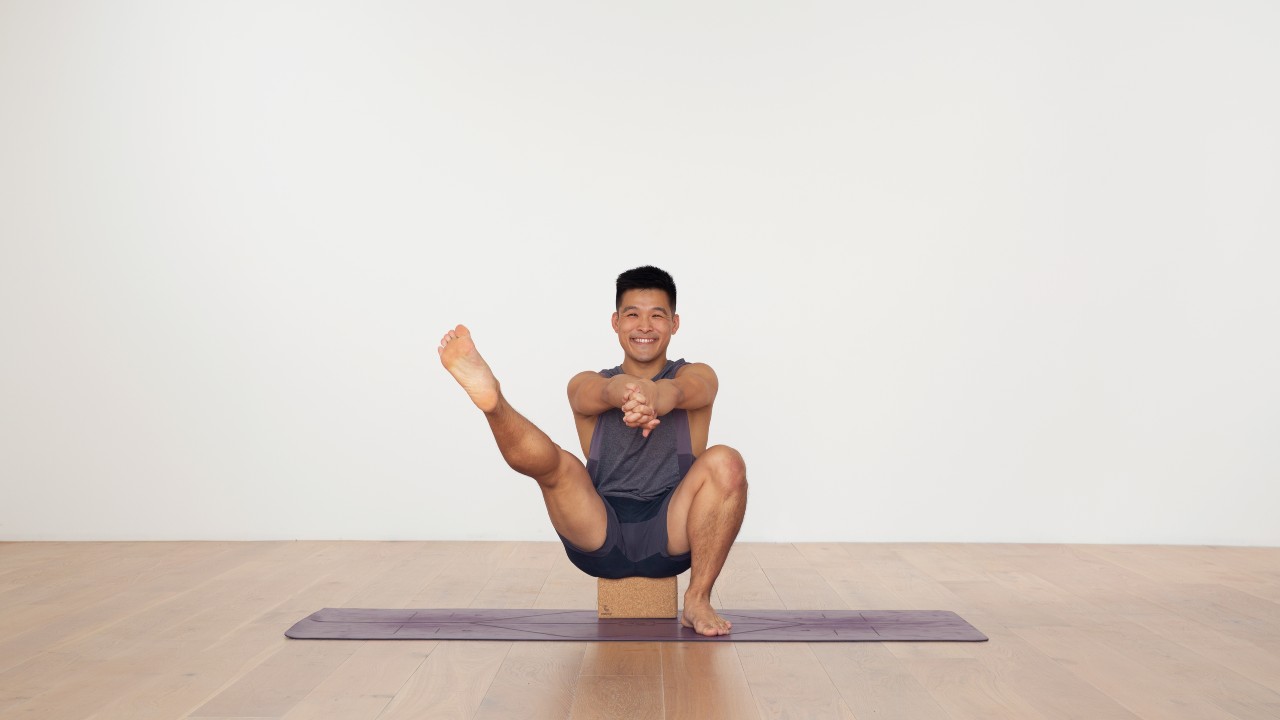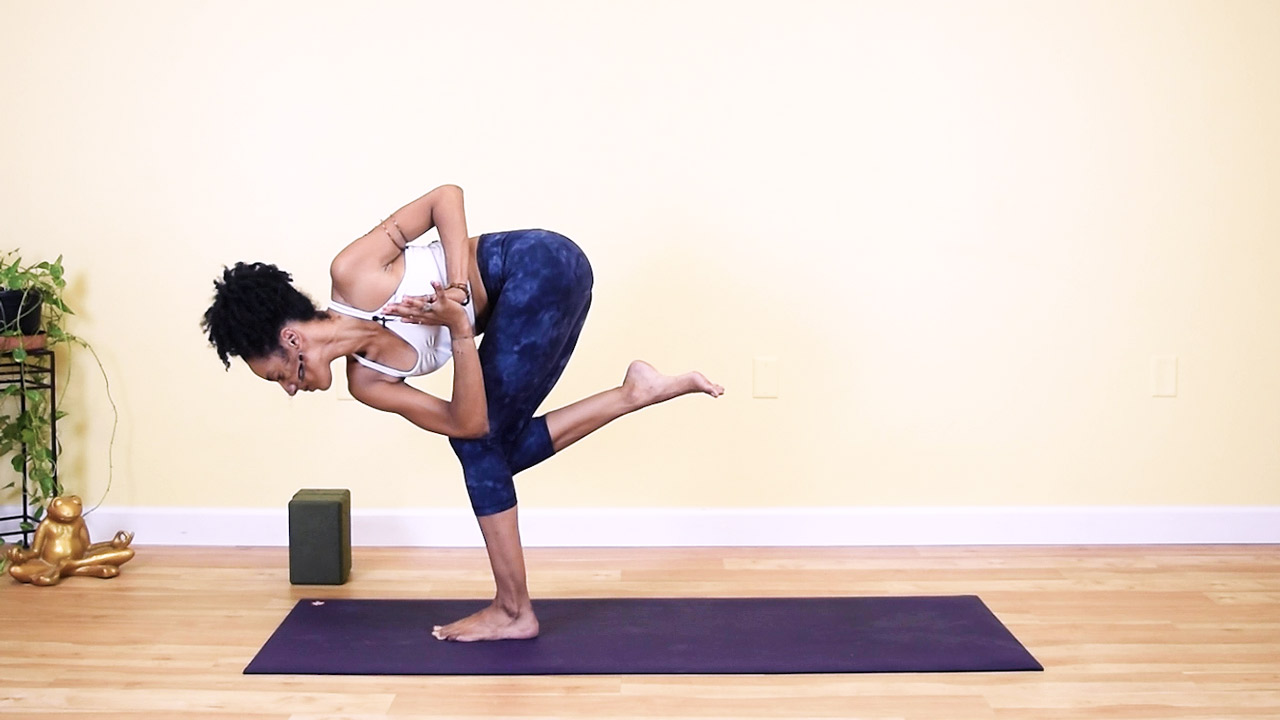As the movement for more accessible and inclusive yoga practices within the mainstream yoga industry continues to grow, more yoga teachers and students are using props within their classes. Yoga blocks are more than just decorative props to have by your yoga mat “just in case you need them”. They’re versatile tools that can be of great support and make poses more accessible – but they can also elevate your practice, and take it to new heights.
In this article, I explore 12 different ways to use yoga blocks. I’ll show you a few ways to support yourself with them, and a few to introduce more challenge into your practice. Whether you’re a beginner or an experienced yoga practitioner or teacher, these techniques will add a fresh perspective to your practice.
Support and space
Yoga blocks are essential props that play a dual role in enhancing your yoga practice. These sturdy, typically foam, cork, or wooden blocks provide stability and support, and can be used to make yoga accessible to folks with diverse bodies and needs.
For newcomers to the practice, yoga blocks can serve as ‘extension tools’, helping to bridge the gap between the body and the floor, and enable you to explore better alignment in a posture or find release. This support minimises strain, reduces the risk of injury and allows you to ease into poses more comfortably. I like to use blocks in this way in both my Restorative-style and Hatha practices, as well as in my most vigorous ones, since I believe there is always room to give ourselves more compassion and support.
Strength and balance
Yoga blocks also cater to practitioners seeking to explore challenging posture variations, as well as build strength and flexibility to eventually try them without the props. By strategically placing blocks, you can explore various pose variations that may demand greater strength, balance, and flexibility. They enable deeper stretches and offer countless possibilities for creative variations in practice. In this way, yoga blocks are invaluable companions on the journey to both foundational mastery and advanced exploration in yoga.
If you’re someone who practices yoga and has never explored the use of yoga blocks, we invite you to consider where this resistance may be coming from, and perhaps explore other areas in your life where you may have a tendency to reject support.
Try it in class: Balance within
Playing with balancing postures on the mat can help us find balance when we face the challenges of daily life. With pranayama, creative flow, and the optional use of blocks, this practice will help you explore your balance within, so that you can live harmoniously without.
12 ways to use yoga blocks
There are many ways to bring yoga blocks into your practice. As mentioned, your yoga blocks, as well as other props can be used both to support and bolster your practice, as well as challenge you and bring you into new dimensions of asana that may not be accessible otherwise.
You can get as creative as you want when using yoga blocks for support and ease in your asana practice. There are also infinite ways to utilise these versatile props to help you add a little challenge. Here are 12 of my favourites:
1. Anahatasana with blocks under the hands
In this heart-opening posture also known as puppy pose, you can bring blocks under your hands at any height as you bring your chest and chin down toward the floor. This variation will create a deeper stretch and backbend.
2. Camel pose with 4 blocks
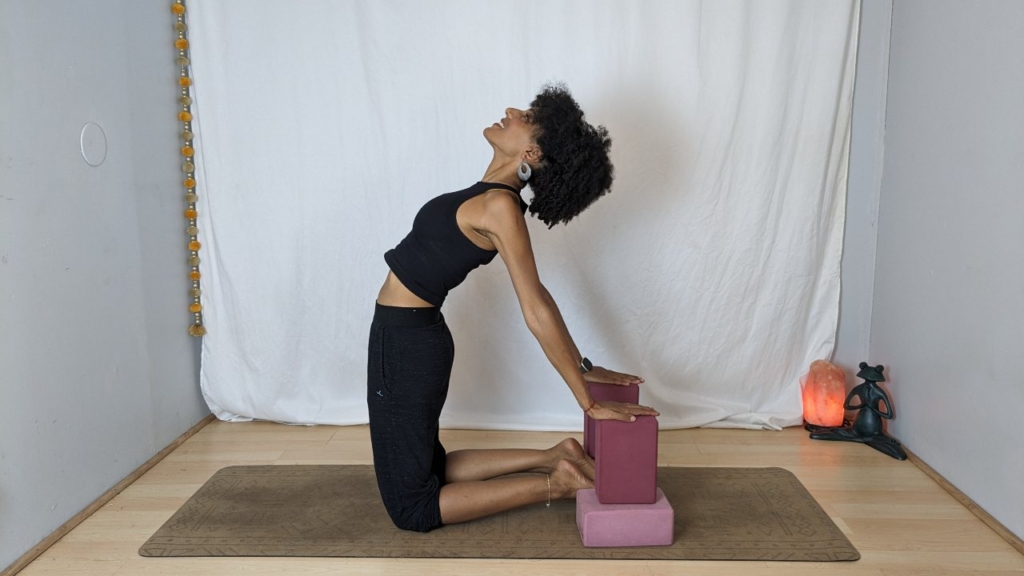
If you want to explore Camel pose (Ustrasana) but have shorter arms, or a less flexible spine, using four blocks can be a great way to make this posture accessible.
To try it, pile up two blocks by each foot, in whatever configuration will allow you to bring your hands to the props as you access the asana.
3. Standing forward bend with blocks under your feet
If your hamstrings and lower back are on the more flexible side, or perhaps you just have longer arms, you may want to try placing one (or two!) blocks on the ground, and stand on them to perform your Uttanasana.
4. Tree pose with a block under the free foot
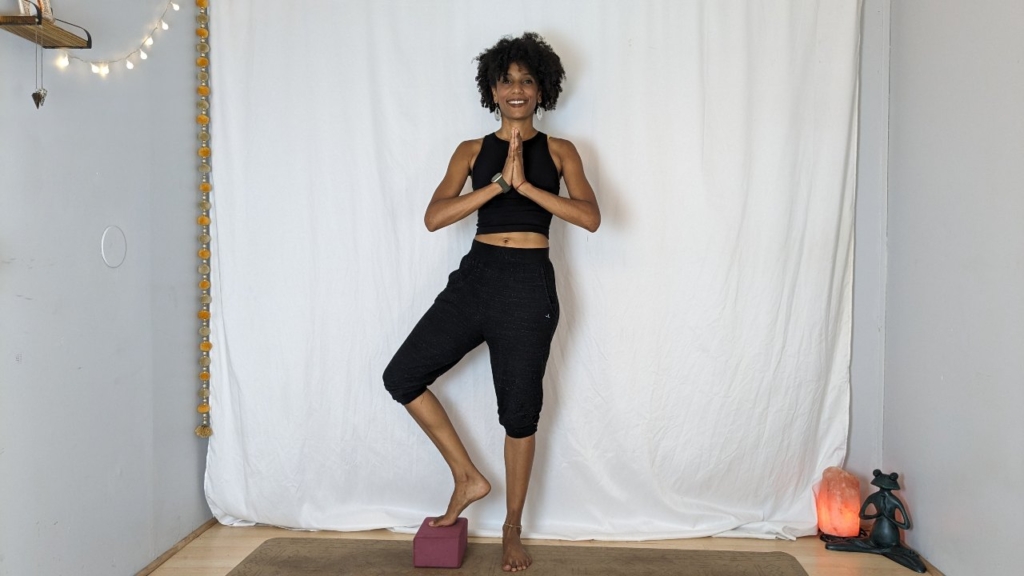
If you’re searching for more stability when practicing Vrksasana, you can always bring one hand to the wall.
Perhaps you could place your free foot on a block instead, giving you more stability, which helps you explore your balance a little as well.
5. Hanumanasana with blocks
Splits pose is a deep stretch for the legs and hips and requires strength, flexibility, and resilience. You can use blocks in this posture in several ways:
- Blocks under your hands
- Sitting on a block
- A block under the front hip or under your front hamstring
- A block under your front heel
6. Revolved Head to Knee pose with the elbow on a block
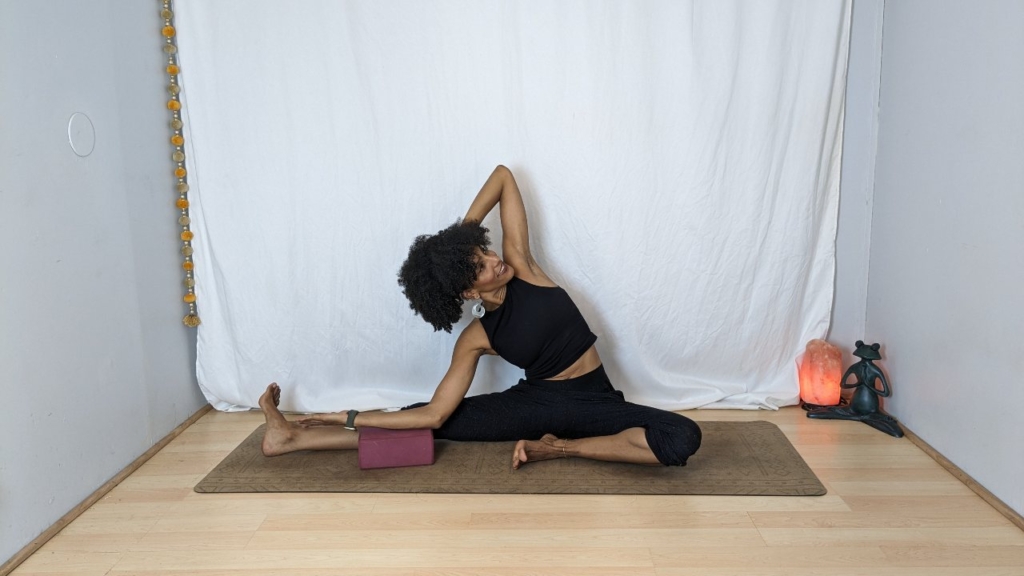
This side body stretch can be very comfortable for some, and a bit too intense for many. What ends up happening is that we turn our chest down to the ground and cave the heart back in order to bring the elbow to the floor.
If that sounds like you and you want to find more space to breathe and feel the side stretch in this asana, try bringing your block right in front of the extended leg (in either of the three heights) and place your elbow there.
7. Wheel pose with blocks
To create more height and often find better alignment in this deep backbend, let’s bring the practice to the wall for a moment. Grab your blocks and place the edge against the wall’s base / skirting board. Practicing Wheel posture with your hands on the blocks can ease the strain on the wrists and shoulders.
8. Extended side-angle pose holding blocks
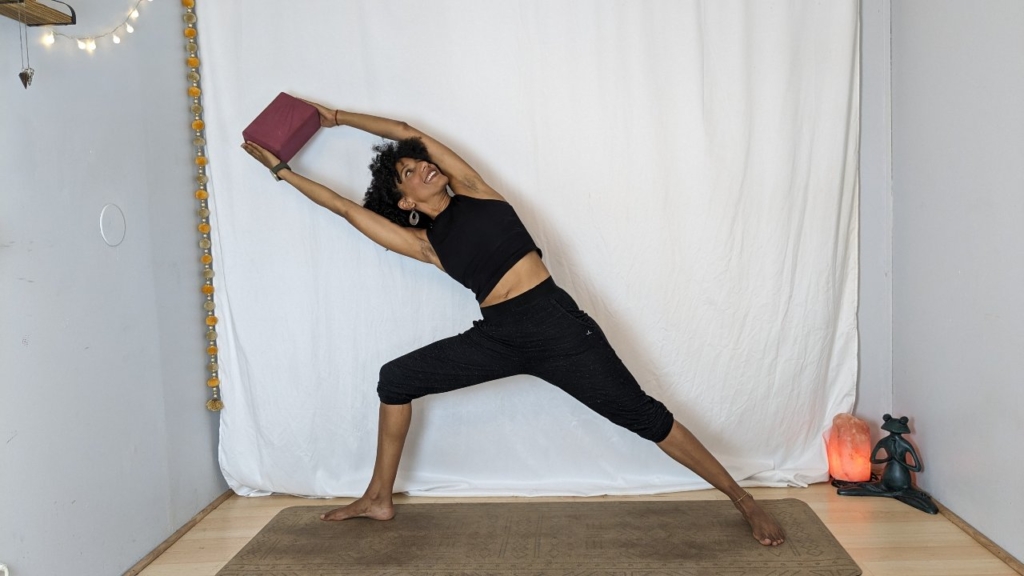
Challenge your obliques and arms in this fun variation of side-angle pose. Hold a block between your hands while practicing it, and notice what it does for your alignment as well as your mental fortitude!
9. Skandasana seated on a block
Just as you may have sometimes done in Malasana, you can sit on a block when practicing this side lunge pose. Another way to use your blocks in this posture is under your hands, keeping your hips free in this variation to perhaps explore more sensation in that area and still support yourself.
10. Supported Supine Figure 4
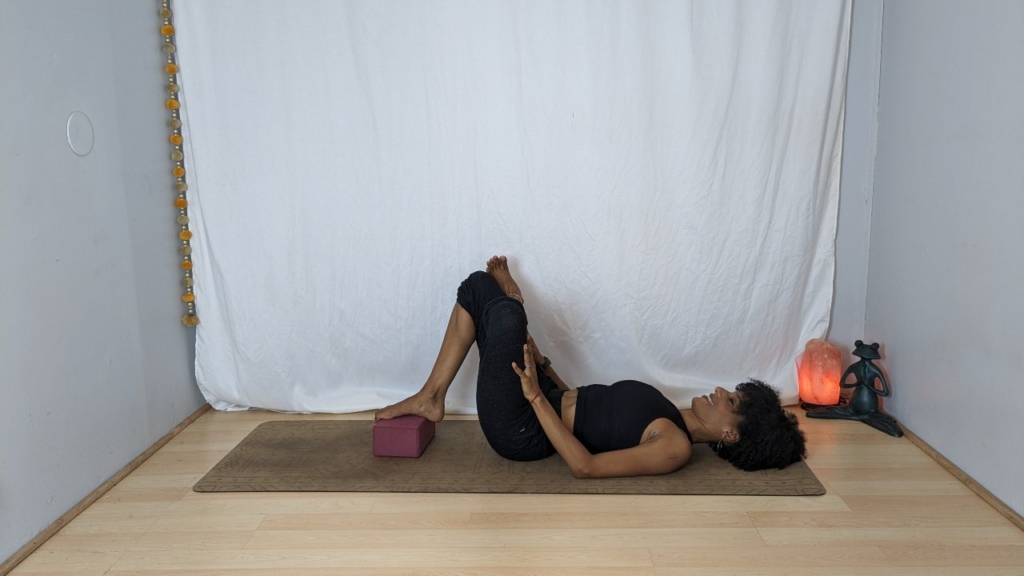
Find more stretch in the glutes but less effort in the asana. Instead of interlacing your hands under the leg or keeping your foot on the ground, try going somewhere in between by sliding a block under your foot.
This offers extra support and may help you to relax a little more easily in the pose.
11. Seated Forward Fold with blocks under the knees
Sit with your legs semi-extended and a block under each knee. This props up your knees and provides a softer bend. It also makes the forward fold gentler on your lower back and hamstrings.
12. Chest Opener in Savasana
For this relaxation asana, try this a gentle heart-opening variation of Savasana with a block. Place the block widthways on its lowest height (parallel to your spine) under your shoulder blades. You might like to place a blanket over the block if it’s uncomfortable. This creates a gentle chest opener and can help release tension in the upper back, bringing you into deeper relaxation.
Exploring new dimensions
By incorporating yoga blocks into your practice, you can transform your experience on the mat. Blocks provide assistance in achieving challenging poses but they also offer the means to explore new dimensions of mindfulness, strength, and flexibility. So, the next time you roll out your mat, don’t just reach for your blocks out of necessity, or place them by your mat “just in case”. Instead, embrace them as opportunities for exploration and growth in your yoga journey.
Related reads:
- Accessing Headstand / Sirsasana – If you’d like to develop a Headstand practice, read Laia’s step by step guide for getting upside down using yoga blocks.
- Build up to Bakasana – Build up strength and stability using blocks to help you to float into Crow pose.

